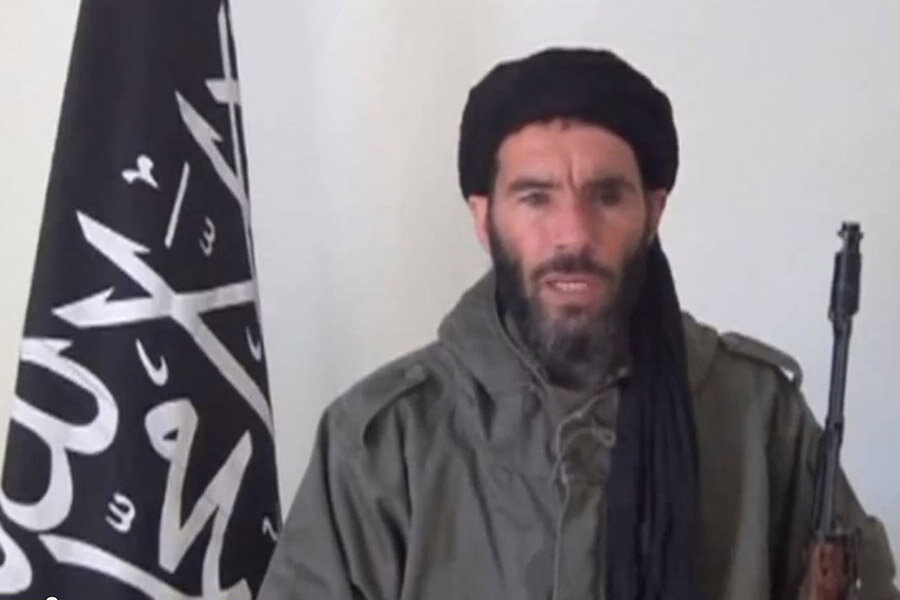Did US strike hit terrorist Mokhtar Belmokhtar? Time and forensics will tell
Loading...
A US airstrike in Libya over the weekend reportedly killed Algerian militant Mokhtar Belmokhtar, the mastermind of a 2013 attack on an Algerian gas plant that left 38 hostages dead.
Libya’s internationally recognized government said in a statement that Mr. Belmokhtar and “a number” of Libyan terrorists were killed in the airstrike on a farmhouse in the city of Ajdabiya.
While Pentagon officials said Belmokhtar had been targeted, they added that forensic proof is needed to confirm his death. Given the likely extent of the airstrike damage, that determination could take time, according to The New York Times, unless Belmokhtar’s own group issues a statement of mourning.
As a leader of jihadis across North Africa, Belmokhtar was dubbed "The Uncatchable" by the French military, Reuters reports. He had been reported as successfully killed several previous times, including in 2013 when he was believed to have died while fighting in Mali.
If confirmed, his death would be a major counterterrorism victory for the US. But the report of his demise may be no different than the previous reports according to The Associated Press:
An Islamist with ties to Libyan militants said the airstrikes missed Mokhtar Belmokhtar, instead killing four members of a Libyan extremist group the U.S. has linked to the Sept. 11, 2012, attack on the US Consulate in Benghazi that killed Ambassador Chris Stevens and three other Americans …
The Islamist, who spoke on condition of anonymity for fear of reprisals in restive Libya, told The Associated Press early Monday that Belmokhtar wasn’t at the site of the U.S. airstrike.
Born in Algeria, Belmokhtar became a former senior figure in Al Qaeda in the Islamic Maghreb (AQIM). But he then left to form his own militia. The US filed terrorism charges against him in 2013 after the attack on the Amenas gas plant in Algeria. Three Americans were among the 38 hostages killed at the plant, which was partially operated by BP and Norway's Statoil.
The AP reports that Belmokhtar essentially “built a bridge between AQIM and the underworld.” He created a system where outlaws could network and support each other and recruit young people.
The Times writes that Belmokhtar was considered the last surviving well-known leader among his generation of jihadists in North Africa – and one of the most feared.
Mr. Belmokhtar’s success in maneuvering largely unhindered for years in the deserts of northern Mali and southern Algeria and Libya was a result of his masterful integration into the local populations. He married a woman from Timbuktu, Mali; spoke the local dialects; and shared some of his rich takings from more than a decade of kidnapping Westerners …
Among his militant names is Laaouar, or the One-Eyed, because it is said he may have lost an eye while fighting the Soviets in Afghanistan, where he learned combat skills. A major cigarette trafficker, he is also known as Marlboro Man.
The weekend airstrike comes amid ongoing fighting between Al Qaeda-linked militants and those tied to the self-declared Islamic State in eastern Libya. For his part, Belmokhtar has remained loyal to Al Qaeda, denouncing former members who defected to IS.
The attack marked the first time the US military has carried out any kind of airstrike in Libya since 2011, when NATO launched an air campaign to help oust former dictator Muammar Qaddafi. The Libyan government, which is based in the east of the country, said in its statement that the attack was carried out in consultation with it.







